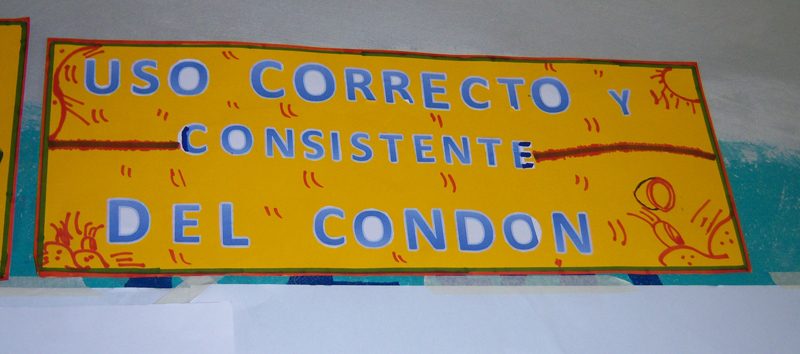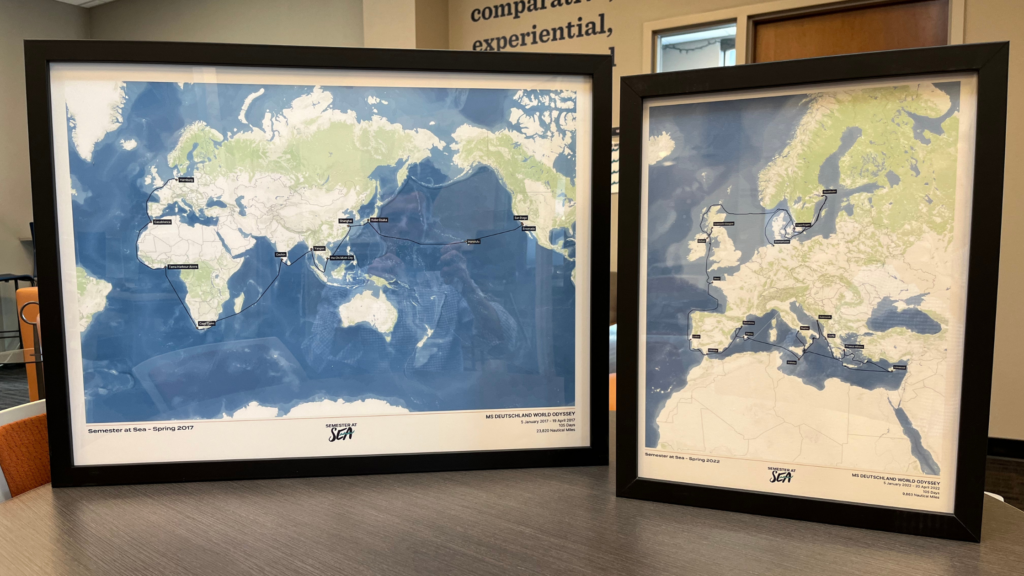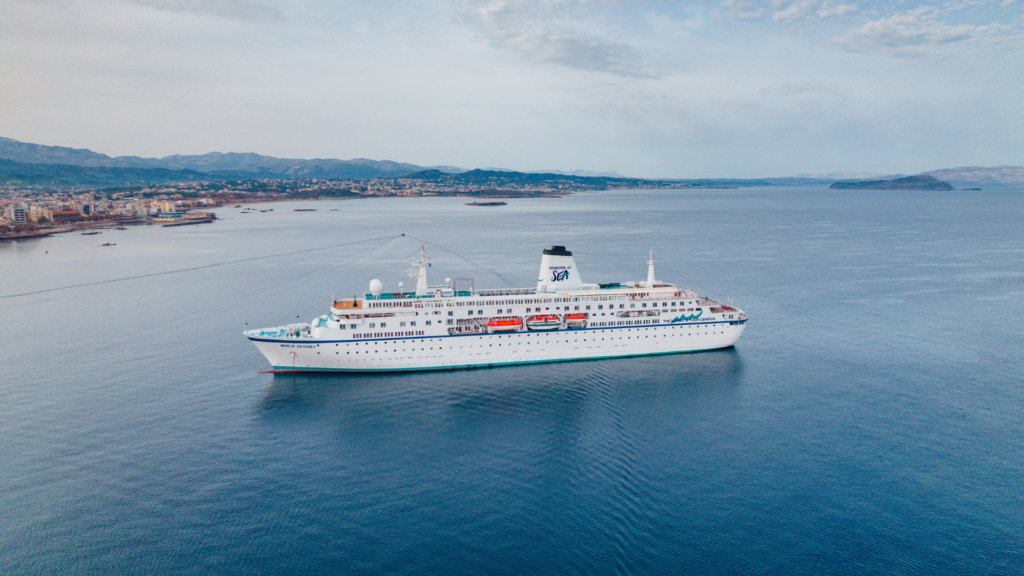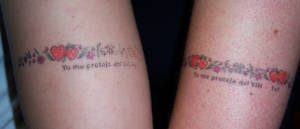
This is the face of HIV/AIDS in Honduras.
The 31-year-old woman, almost as tiny as a child, has been a commercial sex worker since she was 14. At 15 she had her first child. At 16, she was infected with HIV and didn’t know. She gave it to her husband; a second child was born infected and died.
As professor Miguel Karian interpreted, she told the gathered Semester at Sea students that for many years she denied she was sick. Finally, she became so ill she sought treatment, and now takes antiretroviral drugs to keep the infection at bay.
Today, she is a mentor, one of a group of women in Puerto Cortes who have learned about HIV/AIDS and deliver information and advice to their peers in the sex trade – and to their customers.
This is nonjudgmental, practical advice. What sexual practices lead to infection. How to always be prepared with condoms and how to put them on. Nearby, a mobile lab offers 30-minute HIV tests.
The trip to the streets of Puerto Cortes was part of the field program for Emma Mitchell’s Maymester course on “Building Health in the Caribbean.” The theme of this program was U.N. Millennium Development Goal 6: Halt and reverse the spread of HIV/AIDS.
In Honduras, it’s an uphill fight.
* * *
With a population of 7.5 million, Honduras has an HIV infection rate of 0.68 percent among 15- to 49-year-olds, second only to Guatemala in Central America, said Dr. Rolando Pinel of AIDSTAR-One/Honduras, part of a global project of the U.S. Agency for International Development.
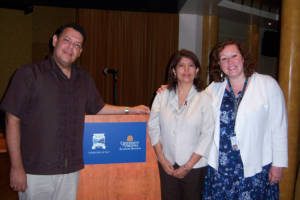
A rate of six per 100,000 is evidence of a “controlled epidemic,” Pinel said, but the rate is much higher among most at-risk populations: 10 percent among men who have sex with men, 4.6 percent among commercial sex workers, and 4.4 percent among Garifuna, an Afro-Caribbean group living in several countries in Central America. It’s in those populations where AIDSTAR-One and AIDSTAR-Two hope to achieve the greatest results.
AIDSTAR-One monitors and evaluates the results of programs to help inform AIDS policies. “We want to make sure the funds go to things that make a difference,” Pinel said. The mission of AIDSTAR-Two is building the capacity of local communities to educate their members so that local AIDS programs, networks and organizations can be strengthened, said Marisela Bustillo Z√∫niga, a communications officer who, with Pinel, spoke to students aboard the MV Explorer.
“The emphasis of what this HIV network is doing is health promotion,” said Mitchell, who just completed her Ph.D. in nursing at the University of Virginia and will soon join the faculty of University of Miami School of Nursing and Health Studies. “It’s those strategies you can’t measure because you’re trying to measure how many people are, as a result of your intervention, not having a health crisis.”
Rather than one prevention message for everyone, the programs are now tailored to specific cultural groups. Buses took the students to Baja Mar, a Garifuna community along a beautiful stretch of beach. They watched as an energetic and engaging young Garifuna woman and man conducted a workshop for local women and young adults, helping them understand the myths and realities of how HIV/AIDS is transmitted.
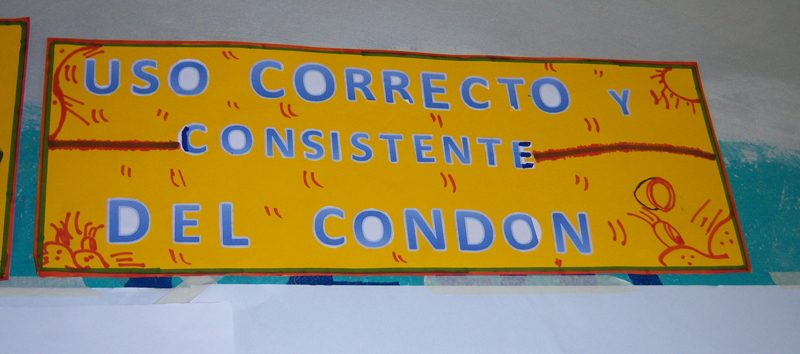
“I cannot get AIDS if I have sex only with my husband. Mito o realidad?” “Mito,” came the reply. “Porque?” asked the instructor, which led to a lively discussion about whether husbands can be trusted.
Today, 90 percent of Honduran women know about HIV transmission, but only 26 percent report using condoms. “Women are not empowered enough to negotiate condom use,” Pinel explained.
“It’s one thing to know something,” Z√∫niga said. “It’s another thing to change your behavior.”
The next stop was an HIV/AIDS education fair at a community center, attended by school children in their crisp white and navy school uniforms. Games and pamphlets reinforced their knowledge about the disease, its transmission, its prevention. The focus is on teaching even very young children to make good decisions that will keep them healthy. “When people start showing symptoms in their 20s and 30s, that means they were infected in their teens,” Pinel said.
AIDSTAR-Two reports that nearly 11,000 HIV tests were conducted under its programs, 53,000 people received prevention interventions, either directly or indirectly, and 11 more people were trained to perform HIV tests in a geographic area stretching along the north coast and down to the central region of the country.
But the challenges are daunting. The number of men who have sex with men is nearly impossible to gauge. Only about half of those who need treatment receive it. Rural areas are difficult to reach. Mother-to-child transmission is difficult to stop because some question the cost-effectiveness of testing 100,000 mothers to identify six with HIV. “Do we have the luxury of implementing an expensive program?” Pinel said. “And what about the human rights of a kid born with an infection?”
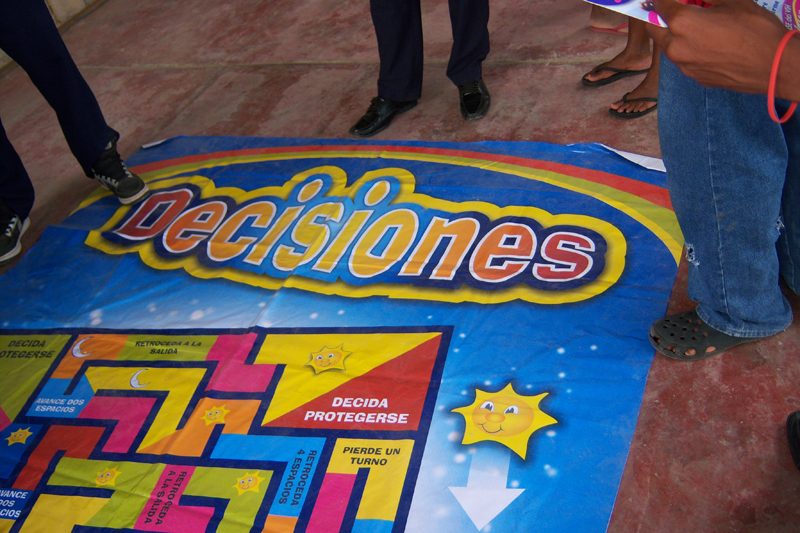
Multiply that by millions of people in hundreds of countries around the world. Thirty years into the AIDS epidemic, leaders are gathering in New York this week for an AIDS summit that will explore the “real but fragile” progress in the global fight.
That fight has new meaning for the Maymester students. Mitchell said, “For however small a glimpse they received, they definitely can further appreciate issues of why it is so difficult to achieve the Millennium Development Goals, why it is important to make sure they’re culturally tailored to whatever population is being targeted, and why it is so important to work towards them.”
* * *
This is the face of hope in the fight against HIV/AIDS in Honduras.
At the Garifuna community center, teens and pre-teens play an oversized board game, “Decisiones.” As their game pieces move around the colorful board, they are asked questions that test their saber ‚Äì their knowledge ‚Äì of HIV/AIDS.
You want them all to win.
